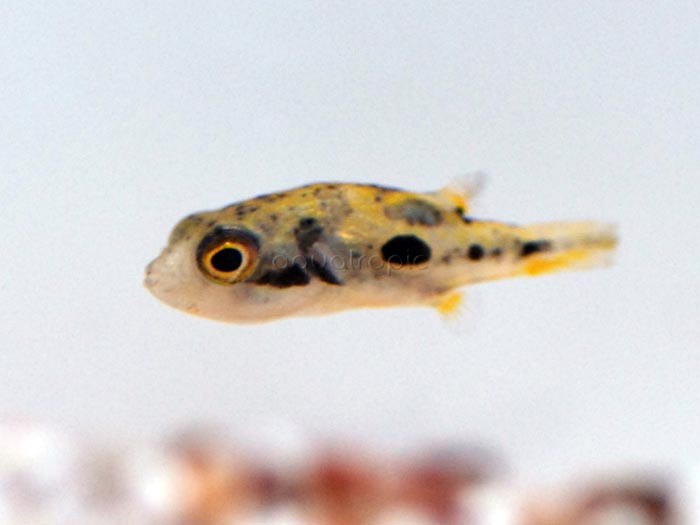Indian Pea Pufferfish (Carinotetraodon travancoricus)

Growing to little more than an inch in length, the Indian Pea Pufferfish (Carinotetraodon travancoricus) is one of the smallest members of the pufferfish family, and arguably the single best species for the average freshwater aquarium. Though it will certainly nip the fins of slower moving fishes if afforded the opportunity, this fish is generally a bit too small to cause any real harm to most potential tankmates, especially if kept in larger confines.
The genus Carinotetraodon (which was formerly included in Tetraodon) contains a total of six species, all occurring exclusively in the freshwaters of Southeast Asia, with C. travancoricus native to the Western Ghats of India. The pufferfishes in this genus are all quite small and possess a ridge along the midline of both the back and belly which, in males, can be raised during mating displays. A similar structure is also found in the saltwater tobies (Canthigaster), and the two groups are thought to be closely related.
Unlike most pufferfishes, Carinotetraodon can be reliably sexed and bred in captivity, though it does certainly take some effort on the part of the aquarist. Mature males develop a dark line along the ventral ridge (juveniles, however, typically don’t show this yet), allowing them to be differentiated from the unmarked females. If attempting to breed this fish, or even if keeping them in groups in smaller aquariums, it is best to establish a harem, with one or two males with several females. This will mitigate any aggression among males and lessen any stress towards the females. Pity the lady pufferfish who must fend off the biting advances of multiple gentlemen callers in a nano tank.
Pea Pufferfishes need a crunchy diet to help wear down their ever-growing teeth. This can include live snails, which they will most assuredly relish. In fact, many planted aquarium keeper who struggle with introduced snail populations will resort to this species for control. Some have even successfully kept their pufferfish alongside ornamental shrimps, though this is always a risky endeavor, and one which is liable to be met with failure (or a tasty success, from the pufferfishes point of view).